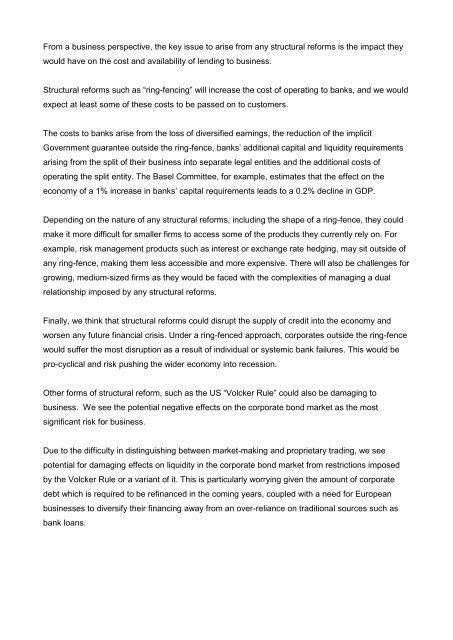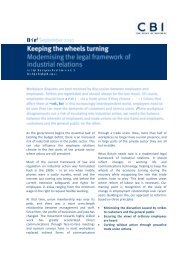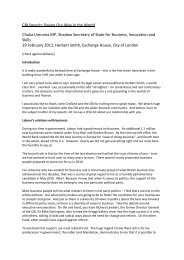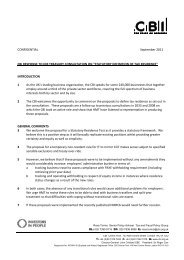CBI - European Commission
CBI - European Commission
CBI - European Commission
- No tags were found...
Create successful ePaper yourself
Turn your PDF publications into a flip-book with our unique Google optimized e-Paper software.
From a business perspective, the key issue to arise from any structural reforms is the impact theywould have on the cost and availability of lending to business.Structural reforms such as “ring-fencing” will increase the cost of operating to banks, and we wouldexpect at least some of these costs to be passed on to customers.The costs to banks arise from the loss of diversified earnings, the reduction of the implicitGovernment guarantee outside the ring-fence, banks’ additional capital and liquidity requirementsarising from the split of their business into separate legal entities and the additional costs ofoperating the split entity. The Basel Committee, for example, estimates that the effect on theeconomy of a 1% increase in banks’ capital requirements leads to a 0.2% decline in GDP.Depending on the nature of any structural reforms, including the shape of a ring-fence, they couldmake it more difficult for smaller firms to access some of the products they currently rely on. Forexample, risk management products such as interest or exchange rate hedging, may sit outside ofany ring-fence, making them less accessible and more expensive. There will also be challenges forgrowing, medium-sized firms as they would be faced with the complexities of managing a dualrelationship imposed by any structural reforms.Finally, we think that structural reforms could disrupt the supply of credit into the economy andworsen any future financial crisis. Under a ring-fenced approach, corporates outside the ring-fencewould suffer the most disruption as a result of individual or systemic bank failures. This would bepro-cyclical and risk pushing the wider economy into recession.Other forms of structural reform, such as the US “Volcker Rule” could also be damaging tobusiness. We see the potential negative effects on the corporate bond market as the mostsignificant risk for business.Due to the difficulty in distinguishing between market-making and proprietary trading, we seepotential for damaging effects on liquidity in the corporate bond market from restrictions imposedby the Volcker Rule or a variant of it. This is particularly worrying given the amount of corporatedebt which is required to be refinanced in the coming years, coupled with a need for <strong>European</strong>businesses to diversify their financing away from an over-reliance on traditional sources such asbank loans.
















